#it allows them to portray emotions in such visually interesting ways
Text
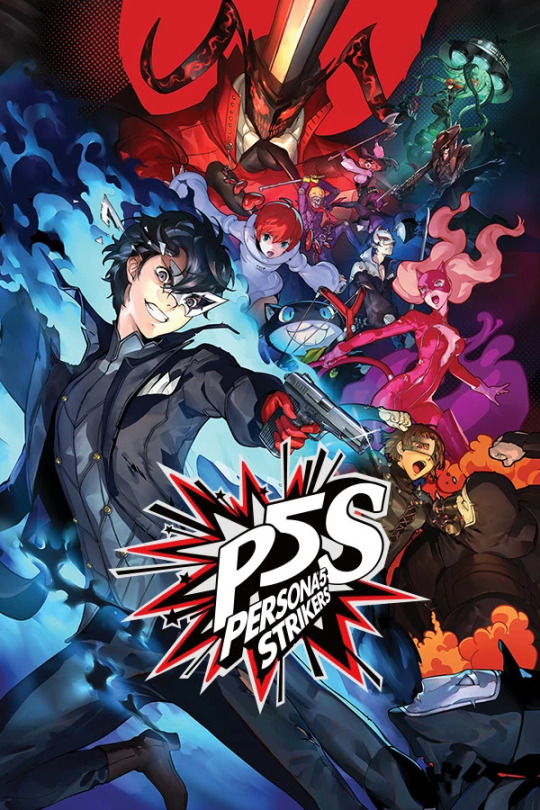
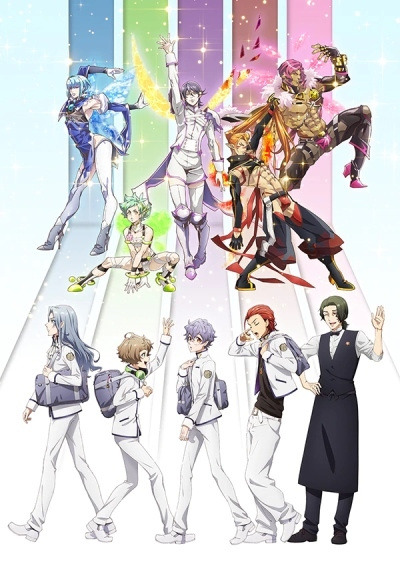
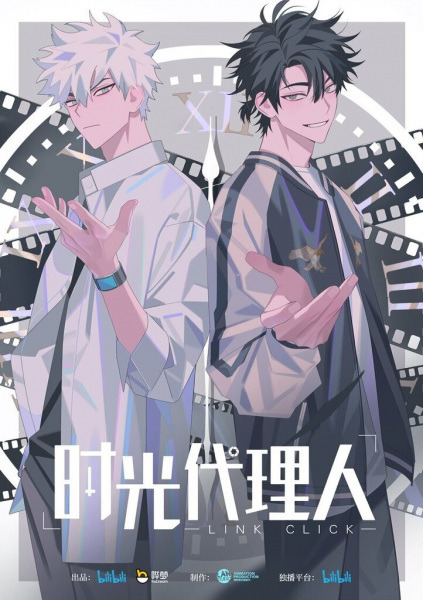
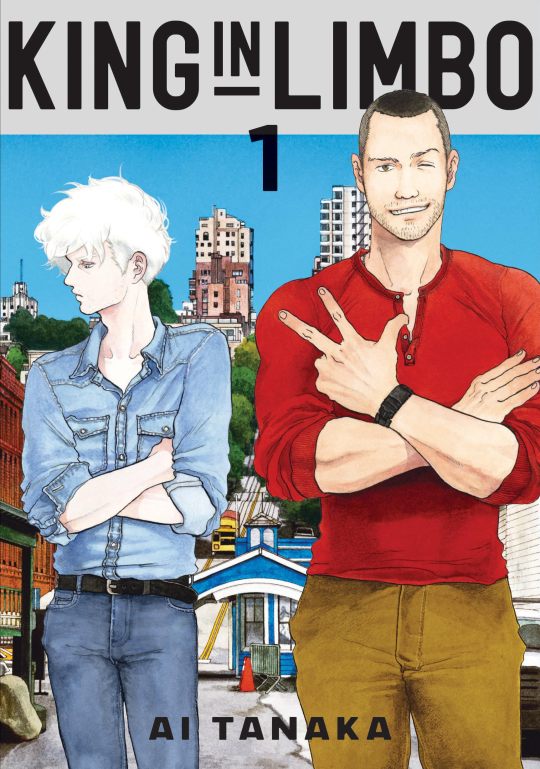

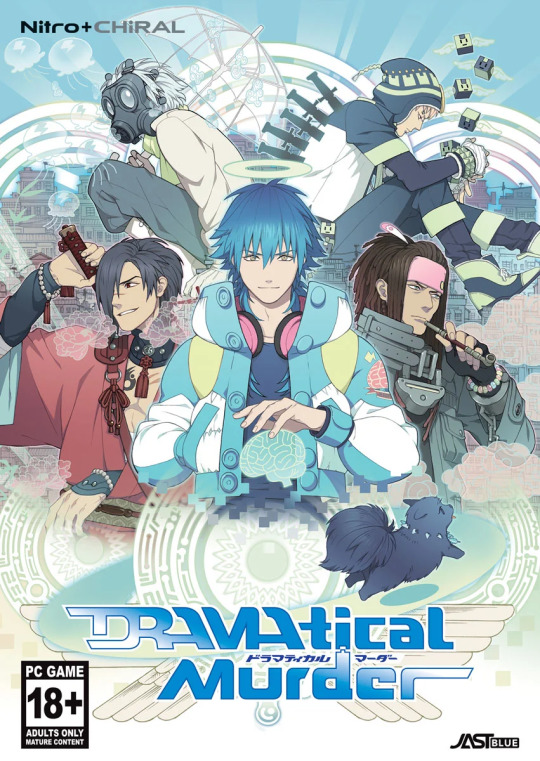
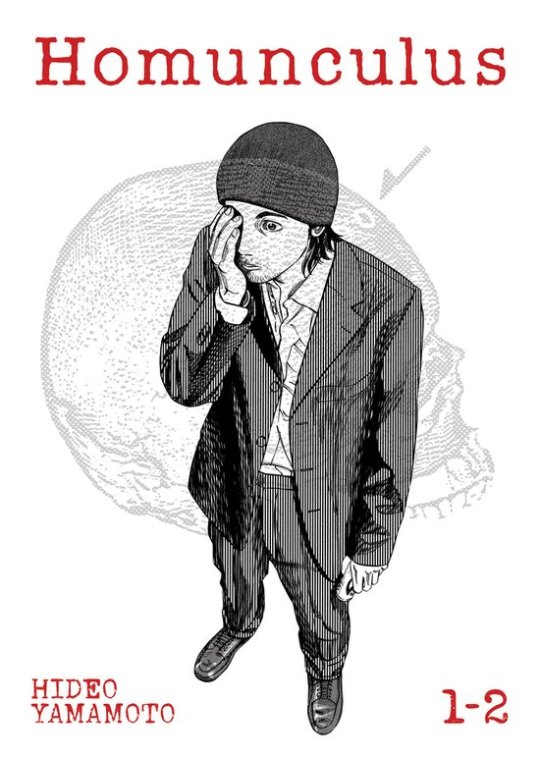
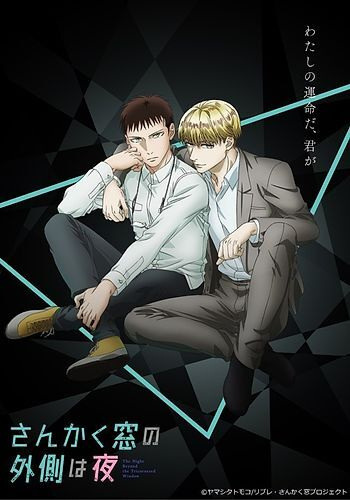

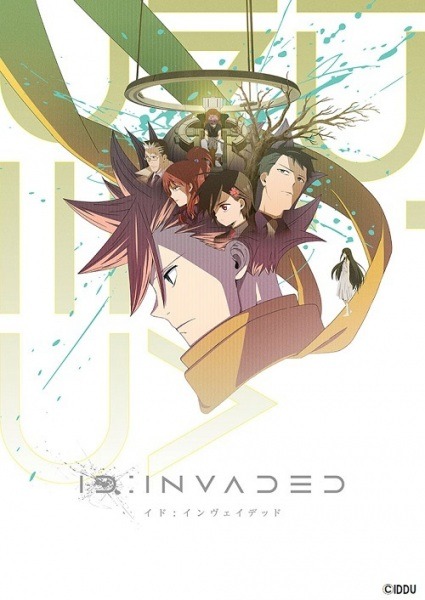

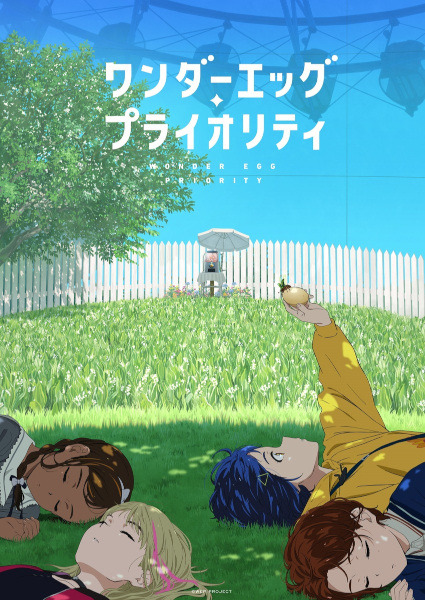
no you don't get it. i literally love stories where they dive into people's hearts/minds (literally or figuratively) sm it's my favourite type of storytelling.
#p5s#fairy ranmaru#shiguang daili ren#limbo the king#king in limbo#pet anime#pet manga#pet 2020#dmmd#homunculus#homunculus manga#sankaku mado no sotogawa wa yoru#the night beyond the tricornered window#sarazanmai#id invaded#paprika 2006#wonder egg priority#tedpost#it allows them to portray emotions in such visually interesting ways#and is a great way to make parallels between the person who's mind they're in and the main characters#these were all the ones i could think of rn but i bet theres more that i havent seen yet#also i only mentioned scramble here because i think it does this concept better than regular p5 lmao.#FEEL FREE TO SUGGEST ME MORE OF THESE#doesnt matter what medium or genre!! could be a book a movie idc i eat stuff like this upppp#EDIT; updates the post after reading ltk and checking if tricorner fit this desc#EDIT; added homunculus too because whilst technically he never actually enters anyones minds he does visualise them into the real world#so its the same end result of seeing a person's true thoughts and feelings. but a slightly different method to get there
53 notes
·
View notes
Note
My personal favourite trope is giant finding hurt tiny and nursing back to health with initial fear from tiny and eventually trusting that the giant won't hurt them

Me logging into tumblr and seeing all you little stinkers sitting in my office waiting for a trope analysis.
Lets do this!!!
This trope is such a comfort trope for me as well.
Alright lets divide this into our two different Archetypes (Giant and Tiny)
Tiny
If you find yourself picturing yourself as the tiny there is a high chance you may be struggling/overwhelmed but have difficulties asking for help. Visualizing ones self as hurt tends to remove some level of freedom (freedom of movement, as well as it being more morally acceptable for someone to impose their will on you given its for your own safety) and thus the fantasy allows for you to get the help you want without having to ask for it. As with most G/t fantasies, there is likely a longing for deep connection and intimacy seen with the shared journey of building trust. The injury could be a symbolic manifestation of the subconscious mind in some cases, although I'm not too sure how common that would be. Even so, I would take the time to analyze the type of injury and what the giant does to both help the injury as well as build the trust.
For example; An injury that effects mobility might suggest a more dire yearning for help, as the imagery you're creating is physically stopping you from running away. The same could be said if you envision a more forceful giant who disregards your emotions for your own safety. The Giant forcing their help on you may be a projection from the subconscious, as a way of saying your fear of asking for help is less important than your need for help.
Our subconscious really does like projection and metaphores, but it is crucial you identify what certain symbols mean to you. Its easy to guess basic symbols for the general public. Almost everyone will see spiders symbolically as a threat or danger, but you need to take yourself into account. I personally love spiders, thus my subconscious imagery might not use them to portray a threat, and might pick something more true to my personal experience.
Giant
Finding an injured tiny has very obvious themes of a desire to help others, be seen as kind, and seeking for your intentions to be understood. I think this trope tends to project a lot of desiring for ones true self to be acknowledges, and a fixation on this trope might imply that that need is not being met in your day to day life.
A less obvious projections that may occur is how one visualizes the tiny. It is very likely that even if you imagine yourself as the giant there is some degree of projection of yourself in the injured tiny. In my opinion, the two most likely projections would be aspects of ones shadow, or parts of you that want to heal from some sort of damage.
The shadow is an interesting concept and although in previous sessions I haven't referred to it in name, some keen readers may have picked up on the implications. Essentially the shadow is a manifestation of repressed traits and desires. We tend to mask aspects of our own personal shadow, but simultaneously and subconsciously (mostly) project them onto others. Given that we are envisioning the tiny in a weak state, there is likely to be some form of projection of traits we may find weak in ourselves.
Healing desires are a little more obvious, where one may project a part of you that was hurt onto the tiny, and work through that emotional pain in the fantasy.
----
My secretary has informed me that my cliental have been avoiding paying their bills. Tsk tsk.
45 notes
·
View notes
Note
Top 5 favorite and top 5 most hated NFCV moments? :)
>:( Fine. But just FYI I ain't bothering to re-watch the scenes so I'm just going to base it all on my (poor) memory
Top 5 favorite:
5. Isaac fighting alongside Abel. Although Abel is much more important than the show portrays him to be and he should have, imo, appeared much earlier, I remember I really liked his dynamic with Isaac. And the way he protected him before Carmilla explodes all over the place....... me WEAK
4. That Trepha moment where they're like "I'm not looking at you, Sypha." "But you're going to~". They're cute sometimes <3 (the little crack in Trevor's voice as he goes "yes" is- GAH. I want smth like this with the game versions :< (imagine it with Trevor's japanese VA.....))
3. Trevor fighting with two whips was visually cool <3
2. Trevor's first "I love you" to Sypha. ;-; Just when he accepted he was going to die for the good cause ;-; Knowing Sypha was with child and he won't be there for them but at least what he's going to do is going to allow them to live and Sypha will know how much he cared and will remember his last words as a little joke that meant "i know and i am sorry i can't be there for the new adventure" and ;-; THAT SHIT BE GETTING ME EMOTIONAL, MAN. I'm glad they never said those words to each other before, it makes it even more impactful when the times actually come <3 (one of the rare things NFCV does right lol) Though I wasn't as impacted by Sypha's own "i love you", don't know why. :<
1. When it ended. :) disclaimer guys, i literally took the joke from Bee, she deserves the credit for her own peak humour Eh otherwise there's this scene in S4 where Trevor makes Sypha sit down on a bed with him to talk calmly about things instead of rushing in for the first time in weeks, and I saw someone say once that it was his way to try and make Sypha tell him she was pregnant without having to push it, and it's a very sweet idea and I very much like it even if idk if it was the intent. It was a nice Trepha moment anyway. <3
Now to the... ERK. Top 5 most hated moments.
5. The moment Trevor found the Morning Star + The moment where he found that one cross thingy. I put them together because of one concept that links the two and annoys me to death: No one gives a shit about Trevor's findings, not even the show itself. By Trevor's reaction when finding the MS, we know it's like, a big deal. But he's the ONLY ONE to treat it as a big deal, Sypha just goes "lmao what's that ugly thing" and clearly doesn't care about what Trevor explains after. It's like he found a random object on the ground. The show doesn't bother to make us really feel how big of a deal this is. As if Trevor was just exagerating.
Then in S4, Trevor find the cross thingy and excitedly shows it to Sypha, who still doesn't care (but at least pretends to this time, i guess, with not much conviction). And I guess the cross isn't as important as the morning star... but I get really annoyed at Sypha just seeing Trevor getting passionnate and going "bruh he found another toy". I would have had less problem with it if Sypha was shown to have interest in Trevor's findings (starting by the MS) before, and because Trevor keeps finding things, she gradually become less and less impress but still pretends to be because well she likes him and he's passionnate and it's kinda cute. But she literally never cared. It's yet another way to ridicule Trevor for me. :/
4. Everytime someone gets snarky/rude or swears. It's like the show is trying to convince itself of how much of an adult it is. "Oh but it's more realistic-" WHERE DO YOU LIVE TO HAVE EVERY SINGLE PERSON EVER SAYS "SHIT" AND "FUCK" EVERY TWO SENTENCE?? I AM BAREY EXAGGERATING. And it makes the joke that Trevor is having a bad influence on Sypha (the "i could piss in a glass and tell him it's beer after he just saved my life" girl) and Alucard (the "yes fuck you" boy) fall flat. Every one is rude in this world. Even DEATH ITSELF LIKE FOR FUCKING HELL'S SAKE
3. Carmilla's #girlboss first appearance. :) Dracula being unable to make his own court shut up is already stupid and horribly irritating (the fact he is actually whispering is more ridiculous than intimidating) but Carmilla appearing like a BOSS, making everyone shut up for SOME reason, and then insulting Dracula's wife, the whole REASON WHY THERE'S A WAR, right to his face with NO CONSEQUENCES FOR HER... URGH I HATE IT I HATE IT SO MUCH (and I am being generous because it is a top FIVE but there is not a single Carmilla moment i liked)
2. The moment Hector trapped Lenore to PROTECT HER. It was the moment I've been waiting for the whole season. The moment where Hector was going to reveal how he manipulated Lenore. The moment where he was finally going to give her a taste of her own medicine. The moment where he was finally going to go "I won't be a victim anymore, I am breaking free, fuck you. I can't believe you actually thought I could feel any kind of affection for a monster". But noooo, because Lenore was made soooo sympathetic, he HAD to actually fall for her!
My heart and hopes and dreams literally shattered the moment Isaac arrived and Hector went "don't hurt her!" :)
1. When it started lolllll The two rape scenes. (they were mixed in one so it counts idc) Not because they exist. But because of what they led to. :) AKA, for Lenector: Rape apologism (it's okay because Hector's a man and he enjoyed it :)), romanticism of abuse (Lenore literally humiliated Hector in front of her sisters, talked about how she was going to use him for sex, went "i made you into my pet just like you always needed :)" while Hector was on his knees having a breakdown, then next season without any warning or development he's all fine with her again), the show shitting on the very idea of Hector getting any agency ever, Hector falling for Lenore with NO DEVELOPMENT, out of NOWHERE, because WHY would we need to show and explain why the abused man would fall for his abuser that he seemingly hated and planned on plotting against at the end of the last season?? There's so many things wrong with this ship and you and other people already explained it before.
And for the non-twins twins x Alucard: Poor handling of trauma. We see Alucard crying afterward, cool, NFCV likes to make him cry, visibly. Then he PISS on their CORPSES (what a mature show, so well written compared to those shitty games :)). And though I can relate a bit to the "oversharing with a stranger" part, the fact said stranger literally goes "okay...?" when Alucard reveals his trauma to her like HE'S WEIRD FOR HAVING BEEN ABUSED and makes a JOKE OUT OF IT. WHAT THE ACTUAL FUCK. And then we ever talk about it again or see any consequences of it either. Almost as if the sex scene was useless from the start. :)
Uuuurgh it's finally OVER. There's so much more scenes I could rant about, but hey, it's a top 5, not a top "however much number you need" :) (and thank the LORD it is because it was already complicated and long to make as it is lmao)
#i might have cheated a little bit on the 4th reason of the second top#eh. whatever#can you guess i was getting a bit angry lol#call me NFCV the way i keep swearing LMFAOOOOO#anyway. this was painful.#fuck you for the ask <3#anti netflixvania#tw rape#tw abuse#tw bad witing like horrible like FUCK
10 notes
·
View notes
Text
Analytical Application 3 : Poststructuralism and Postmodernism
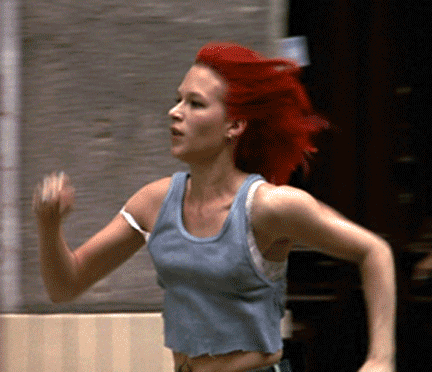
Repetition (54:39)
a) Repetition operates as a creative force rather than a simple duplication or recurrence of the same thing. Instead of viewing repetition as a mere replication of the original piece, Deleuze suggests that repetition involves a process of differences. Each repetition contains a variation or difference from what came before, leading to a multiplicity of possibilities rather than a static sameness.
b) The time slot I picked was an image of the phone. Each time the movie showed the phone, it marked the beginning of a fresh cycle of the day she had already experienced. She was talking to her boyfriend, Manni, who got himself in some trouble. Because of her passionate love, she runs around town trying to solve his issue. Even though it was the same day, each cycle had a different story and meaning. Each time, she tried to fulfill her mission of retrieving the money she needed but, along the way, unlocked new experiences that changed the storyline. The repetition of each day shifts the significance of the plot of the movie, leading to a melancholic ending. This method of filming gave the creators the freedom to play around with one storyline and create different endings that seemingly share the same message. It portrayed the emotion more drastically than just finishing it off with one ending and potentially creating a sequel.
Pastiche (13:10)
a) Pastiche refers to the artistic technique of borrowing elements or styles from various sources and integrating them into a new work. Pastiche can take many forms, including visual aesthetics, narrative structures, character archetypes, and thematic elements. It allows for embracing film techniques that are shared among the industry.
b) The style of flashbacks in cinema was created by Ferdinand Zecca in 1901. It is a film technique that allows the viewers to grasp more of an understanding of the storyline and character. In this specific shot, Lola is running around town trying to find a solution for her boyfriend. Because she's so frantic, she runs into this elderly lady, which causes a flashback in life. The woman is pushing a child, yet in the flashback, we witness her family turmoil, including the heart-wrenching moment when child services intervened and separated her from her own child. As a viewer, I got to understand her position more and the emotion she portrayed in the film. Without this film technique, I would not understand her completely. The creation of this film technique allowed directors and editors to allow more room for context. It transformed the industry by creating more empathy for storylines, making them more realistic. Not only was it used for the elderly lady but also for other characters in the film with whom Lola crossed paths.
Sign value (29:17)
a) Sign value refers to the symbolic meaning or significance attributed to specific elements within the cinematic text. These elements include characters, objects, settings, events, and visual or auditory cues. Sign value in film plays a crucial role in shaping the viewer's interpretation and experience of the cinematic text.
b) Money pushed the entire plot of the film. In this scene, Manni perpetrates a robbery by holding up a grocery store at gunpoint, threatening innocent bystanders, and making off with stolen money. Cash is often used as a symbol to represent various concepts such as wealth, power, corruption, greed, or materialism. Depending on how it is portrayed and utilized within the narrative, cash can carry different layers of meaning and contribute to the overall thematic development of the film. Money became the inspiration for the wrong actions Lola and Manni committed. In each cycle of life, Lola or Manni broke the law in order for them to achieve the money that they lost. Manni's life would be in line if they did not retrieve 100,000 dollars. I found it interesting because, in each cycle, the characters cared less about what they did as long as they had the money in their hands. It was an excellent object to revolve the storyline around because money holds significant value both in cinema and in the real world.
Postmodernism (18:00)
a) Postmodernism in film is a cultural and artistic movement that emerged in the late 20th century. It is characterized by a rejection of modernist principles and a playful, self-referential approach to storytelling, style, and genre. Postmodern films often employ intertextuality, irony, and cultural critique to challenge traditional narrative structures and explore themes of identity, representation, and the nature of reality.
b) The shot I chose is the first time the audience gets exposed to the father's personal life. As we learn in the film, he is currently cheating on his wife with another woman who works with him. He just got told that she's expecting a baby, but he already has an entire family with another person. The dynamic of both of them exposes real-life situations that occur on a daily basis. The concept of affairs and divorce in the modern age has been widely more common. Postmodernism is a fancy way of describing the film industry's adapting with time. It challenges the traditional narrative, engages with cultural complexity, and explores identity. It has become a pillar of cinema and the reason why the industry still lives. Not just in this clip, but the entire movie challenges traditional narratives we see in other films. Run Lola Run has a non-linear narrative, explores chances and fate, and has visual and stylistic experimentation. It's a great tactic that allows the emotion to grasp their viewers.
Simulation (52:26)
a) Simulation refers to the process by which reality becomes increasingly replaced by representations that bear no relation to any underlying reality. It disconnects methods that portray a reality. Baudrillard's concept of simulation raises questions about the nature of truth, authenticity, and the construction of reality in a media-saturated society.
b) Death can be depicted as a simulation through various narrative and stylistic techniques that challenge traditional representations of mortality. Specifically, in cinema, creators use repetition, illusions, and metaphorical deaths to change how we view passing away. In this frame, Manni dies due to the actions both he and Lola committed. Before his death, Lola is killed for the same reasons. But because the day keeps repeating, each death has less meaning. The creators of this film somehow changed the meaning of death, and it became a startover for them to retrieve the money. It was an interesting tactic because it maintain the audience focuses while shifting the meaning of love and it's correlation to death. Now, each time they did, it did not feel real. Even though death is reality, in the film, it was far from actually being real.
Work Cited
"Run Lola Run" is a German film directed by Tom Tykwer and released in 1998.
Baudrillard, Jean. Simulacra and Simulation. University of Michigan Press, 1994.
Jameson, Fredric. "Postmodernism and Consumer Society." In The Anti-Aesthetic: Essays on Postmodern Culture, edited by Hal Foster, pp. 111-125. Bay Press, 1983.
Deleuze, Gilles. "Introduction: Repetition and Difference." In Difference and Repetition, translated by Paul Patton, Columbia University Press, 1994.
1 note
·
View note
Text
Scarecrows are an iconic symbol of Halloween and spooky holiday decorations, but why are they so often portrayed as exaggeratedly large or creepy figures in TV and film scenes? After all, the purpose of a scarecrow is to protect a field of crops not cause terror.
The answer likely lies in a combination of cultural symbolism and storytelling devices. Scarecrows have long been associated with nature and the idea of protection - in some myths, they are even portrayed as helpful guardians. Additionally, there's a certain quality of mystery and intrigue to scarecrows that make them intriguing characters. As a result, filmmakers and storytellers may use them to add suspense or heighten the fear of a scene.
Similarly, scarecrows' exaggerated size can be used to add drama or to illustrate the idea of danger. For instance, a giant scarecrow looming over a farmer's field can represent the fear of a 'monster' or hostile enemy. From a visual perspective, this type of physical presence can create a powerful image and draw a viewer's attention to a particular scene.
Ultimately, filmmakers may choose to portray scarecrows in an exaggerated way as a way to heighten the drama and emotion of their stories. Not only does it provide an interesting visual, but it also allows them to create scenes that have a haunting, mysterious, and dangerous quality.
0 notes
Text
Blog post 9 - Emotion in the Witcher 3: Wild Hunt
Emotion in games
One way emotion is achieved in games is through the use of non-player characters (NPCs). They can influence our emotions by displaying their own, which works because in real life the emotions of those with us influence our own. So, if an NPC is displaying some sort of negative emotion, sometimes due to an action or decision by the player, then said player may experience similar emotions and perhaps feel regret or empathy.
This is something prevalent in The Witcher 3: Wild Hunt (2015) as the game is heavily focused around making difficult choices and dealing with the impact of them. This is also a core theme to the entire franchise, deciding what’s good and what’s evil, or having to deciding what’s the lesser of two evils.
Plot
This action role-playing game is the third instalment in the main series of games. It follows Geralt of Rivia's quest to find his adopted daughter, Ciri who is being pursued by the otherworldly Wild Hunt.
Set amidst a war between the Northen Realms and the Nilfgaardian Empire, Geralt of Rivia discovers that his adopted daughter, Ciri, who disappeared years ago has returned and is being pursued by the Wild Hunt. On his quest to find her, he navigates political conspiracies, moral dilemmas and ancient prophecies.
Emotion in The Witcher 3: Wild Hunt
Using what I learned in the lecture, I would say that The Witcher 3: Wild Hunt (2015) serves as a good example of Affect theory through its immersive world building, nuanced storytelling and, of course, its emotional engagement with players.
The complex narrative has many morally ambiguous choices and consequences that resonate emotionally with players. While playing as the protagonist Geralt of Rivia, they will encounter many dilemmas that challenge the traditional notions of good and evil. This prompts them to reflect on their own beliefs and values and causes them to develop an emotional investment in the game’s characters and world, as what the specific player deems as the “wrong” choice can affect the ending of the game.
The open-world aspect also enhances affective engagement by allowing the player to explore and engage with a vast and stunning environment. There is an immersive mood created by the day-night cycle and dynamic weather, which is enhanced by a soundtrack which changes depending on the currently occurring events, which further increases the affective engagement.
Character development is another aspect of The Witcher 3: Wild Hunt (2015) and it is a vital one. Geralt forms relationships with other characters, such as companions and love interests, and these are portrayed with depth and authenticity and contribute significantly to the narrative. These connections generate emotional responses from the player which adds emotional complexity to the already complex narrative.
In conclusion, the discussion highlights how The Witcher 3: Wild Hunt (2015) is a notable example of Affect theory in gaming, making use of the above-mentioned points to deliver an emotionally engaging experience. As a 3D artist I can make good use of this theory. By understanding how visual elements and character expressions can influence player emotions, it allows me go one step further to also craft an immersive and emotionally engaging experience.
Bibliography
CD PROJEKT RED. (2015) The Witcher 3: Wild Hunt. [DISC] Xbox One. Warsaw: CD Projekt
Rose, B., 2019. The Witcher 3: Wild Hunt Synopsis. [Online]
Available at: https://thepathwitcher.blog/2019/11/14/the-witcher-3-wild-hunt-synopsis/
[Accessed 20 December 2023].
Seyfert, R. (2012). Beyond Personal Feelings and Collective Emotions: Toward a Theory of Social Affect. Theory, Culture & Society, 29(6), 27–46. https://doi.org/10.1177/0263276412438591
0 notes
Text
Unveiling the Soul: Artistry in Portrait Photography Unlocked
Portrait photography, the art of encapsulating the depth and essence of an individual within a single frame, requires both technical finesse and a profound understanding of human emotions. In the realm of portraiture, it's not merely about clicking a picture; it's about unraveling stories, evoking emotions, and capturing the raw beauty of humanity. Here, we delve into the nuanced world of portrait photography, unveiling techniques and insights that transcend the ordinary to create captivating, soul stirring portraits.
Embrace the Power of Emotions
Portraits are more than just images; they are visual narratives. To create compelling photographs, dive into the emotions of your subject. Observe their expressions, capture their moods, and strive to convey their innermost feelings through your lens. The eyes, especially, are the windows to the soul focus on capturing their depth and emotions.
Explore Unconventional Settings
While studios offer control over lighting and settings, don't avoid outdoor or unconventional locations. Environments outside the studio often add character and context to portraits, infusing them with a unique charm and narrative that studio settings might not provide.
Harness the Power of Candid Moments
Sometimes, the most captivating portraits emerge from candid moments. Encourage your subjects to relax, engage in activities, or be themselves. Candid shots often reveal genuine emotions and portray the issue in their most authentic light.
Play with Props and Wardrobe
Props and wardrobe choices can significantly impact the narrative and mood of portrait. Experiment with accessories, fabrics, and elements that add depth or context to the story you wish to convey. A simple prop or a distinctive wardrobe choice can transform a portrait's ambiance.
Utilize Creative Editing Techniques
Beyond standard post-processing, explore creative editing techniques to add depth and evoke emotions. Experiment with black-and-white conversions, overlays, or selective color adjustments to emphasize certain elements and evoke specific moods.
Collaboration and Communication
Effective communication and collaboration with your subject are pivotal. Engage in dialogue, understand their story, and involve them in the creative process. Collaborative efforts often result in portraits that resonate deeply with the subject's essence.
Harness Natural Light's Beauty
Natural light can be a portrait photographer's best friend. Experiment with various natural light sources soft, diffused light through windows or the golden hues of sunrise and sunset to create captivating and ethereal effects that enhance the mood of your portraits.
Experiment with Perspective and Framing
Play with different perspectives and framing techniques to add visual interest to your portraits. Experiment with close ups, wide-angle shots, or unconventional framing to create compositions that captivate the viewer's attention.
Patience and Timing
Great portraits often require patience and impeccable timing. Wait for the right moment the genuine smile, the contemplative gaze, or the fleeting expression encapsulating the subject's essence.
Cultivate Your Unique Style
While learning from masters and embracing techniques is crucial, don't forget to develop your unique style. Your style is your artistic fingerprint it sets your work apart and allows you to convey stories in a way only you can.
Portrait photography is a journey of technical prowess and emotional intelligence. It's about capturing the unspoken, freezing moments in time and immortalizing the human spirit. Embrace this journey, let your creativity soar, and unveil the soul of your subjects through the artistry of portrait photography.
0 notes
Text
Run To The Water - Self-Portrait Videography #shorts #selfportraitideas #monochrome
youtube
Hi! Visit https://amzn.to/45bksUp AND https://www.oskuleinonenphotography.com for great inspiration! What Counts as a Self-Portrait? - A self-portrait is the act of an artist capturing their own likeness in a photograph or painting. However, what counts as a self-portrait may vary depending on the artist's intention. A shot taken with a camera is one type of self-portrait, but other forms of self-portrayal may include paintings, sketches, or sculptures. The setting in which the self-portrait is taken can also be important. Some artists may shoot in their workspace, while others may prefer a specific location that holds meaning for them. The desire to convey a particular emotion or state of mind can also be central to creating a self-portrait. Finally, intimacy often plays a significant role in self-portraits, as the image reflects the artist's self-image. Whether portraying oneself realistically or abstractly, self-portraits are an act of self-expression that can offer insight into an artist's personality and creative style. Ultimately, what counts as a self-portrait is up to the individual artist and their interpretation of the genre. Self-Portrait Filmmaking Self-portrait filmmaking is a unique form of artistic expression that combines the visual storytelling of filmmaking with personal introspection. It involves creating a film that depicts the filmmaker and explores their identity, beliefs, emotions, and experiences. In a self-portrait film, the filmmaker takes on the role of subject and director, using the medium of film to construct a narrative that captures their innermost thoughts and feelings. This form of filmmaking allows for a deeply personal and cathartic process of self-discovery, as the filmmaker becomes both the storyteller and the protagonist of their own life. Self-portrait filmmaking encourages introspection and self-reflection for the filmmaker and the audience, who are given a glimpse into the filmmaker's inner world. It is a powerful and intimate way for artists to share their stories and connect with others. Self-portrait filmmaking is a testament to the transformative power of creativity and a reminder that films can serve as a vehicle for self-expression and personal growth. How to Focus Your Shot for Self-Portraits When capturing self-portraits, it's crucial to focus your shot correctly to ensure a sharp and clear photo. The first step is to set up your camera on a tripod or flat surface to avoid shakiness or blurred images. Once you have positioned your camera at the desired angle, you can either select the manual focus option on your camera or use a lens with a wide aperture to create a blurred background effect. Using the manual focus option is more precise, allowing you to control precisely what you want to capture. First, however, check the focus of your shot by zooming in on your face and examining the details to avoid blurry photos. Finding The Story For Self-Portraits Creating a self-portrait can be one of photography's most challenging yet rewarding topics. Finding inspiration for your self-portrait could come from almost anything. The key is to see what interests you and makes you feel comfortable while expressing yourself to the world. Once you have identified your inspiration, it is time to select the perfect pose that captures the essence of the story you want to tell. As a photographer, it is essential to understand the importance of capturing the right photo, as it is a visual representation of yourself. It's best to try and create the perfect environment for shooting a self-portrait, whether in the comfort of your own home or a studio setting. Don't be afraid to step outside your comfort zone; the photo may turn out even better than expected. It is essential to keep in mind that a self-portrait can tell a story. It can show emotions, struggles, and growth, making it personal yet relatable. Shoot abstract portraits If you want to add creativity to your photography, why not shoot abstract portraits? This technique involves experimenting with lighting, composition, and angles to create a less traditional portrait and more visually striking portrait. One way to achieve this is to play with shadows. By positioning your subject in front of a vital light source, you can create dramatic shadows on their face or body, adding depth and mystery to the image. You can also experiment with different angles or perspectives to capture a more unique and intriguing portrait. This might mean shooting from above or Asthetic Pictures below your subject or positioning your camera in unconventional ways. Another way to create an abstract portrait is to focus on specific details, such as the eyes or mouth, while blurring out the rest of the image. Whatever your approach, the key is to be open to experimentation and to let your creativity guide you. As an Amazon Associate, I earn from qualifying purchases.
#Fine#Art#Photographs#Asthetic#Wall#Pictures#Aesthetic#Images#Photography#Cool#Astetic#Macro#Photos#For#Living#Room
1 note
·
View note
Text

One of the main things I want to do visually is get across the literal story within a story aspect of the wizard telling his life story to an author of my game through the art style. I wasn't exactly sure how to find inspiration for this kind of thing but after a few rewordings of a google search and tracing back some vague memories of some games I found a few things that I thought might be interesting.

The first thing that came to mind when thinking about portraying the narrative aspect was a vague memory about a game that took a very literal approach with the whole thing being based around drawings in a note book and after tracing back to where I heard about it I found out that it was a game called drawn to death. The idea of having the game being based around sketches in a note book allows for a lot of over the top child like ideas to be brought to life in a fun way which I think works great in the context of drawn to death but wouldn't work as well in the context of my games narrative as I think it'll lessen the scale of the set pieces within the stories which I want to be one of the main focuses so I think something that has a better balance between being story like as well as feeling large scale.
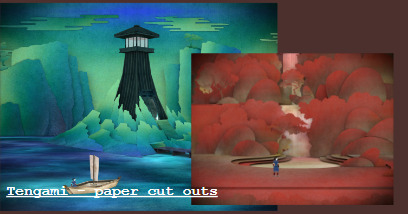
One of the games from the website I linked at the top that immediately stood out to me was Tengami for the way many of the environmental elements look like they've been cut from paper or cardboard and then put together to create the environment. Particularly in that first blue screenshot with the light house I think it retains a sense of scale while still looking hand crafted and story like. I think using paper cut out like environments like this would be perfect for creating that novelized look I want the game to have while also creating a contrast between background elements and mechanical elements to retain visual clarity but I have some worries about how it'll look in a 3D space from a first person perspective that my game will have compared to the side view perspective of Tengami.
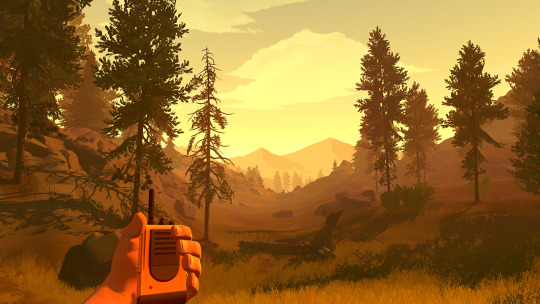
One games visual style that I think looks awesome and would fit my game is fire watch where the 3D models blend into hand drawn visuals that I think give it a kind of self contained within a story look which is exactly what I want for my game. I think it will allow the levels to have the story-book like feel that I want without using a style that could affect the visual clarity of the game since the drawn like a story book visual elements are all in the background which I think also helps reinforce that the player is living out the wizards story as its being written rather than reading the book once its done. The main problem with this style is how do I create those background visual elements and how do I smoothly blend between them and the closer up clearer fully 3D elements. Both of these are technical problems that I think I could figure out with some trial and error.

One style that I think would be quite easy to do on a technical level is that one used in arise where everything is just 3D models but the textures and effects applied to them the game an illustrated feel in a 3D setting without drawing huge amounts of things by hand. This style allows it to convey emotions throughout each part of the game using its various color palettes, lighting and various other atmospheric elements. Throughout my 2 years at college I think I've gotten quite good at making use of unreal's built in tools like post process effects and fogs to create a unique atmosphere for my games and quite keen on giving each of the wizards story's a unique easily identifiable color palette so I think this style would be relatively easy for me to pull off as well as making it easier to convey certain more abstract elements of the wizards stories through the visuals and the the fact that my game will be built around these hard to believe stories means I could get very creative with the some of the imagery in this kind of style.
0 notes
Text
Questions of the week 10/18
1.) What do you expect from your art education?
From a concrete perspective, I expect to be able to learn and master new ways to do art, that I can then implement in my own work as an artist.
Learning hard skills like these lead to a maturation of self expression and can further my journey as an artists. After learning new things, I want to be able to be set free almost (freedom within some guidelines) to figure out how I am able to use certain techniques to accomplish my goal of self expression. A period of exploration like this allows me to achieve a better understanding of how things work, how I work with certain techniques, and how to implement these into my own work. This process inspires a multitude of ideas that arise in a natural way as I am able to experiment.
I have noticed that when presented with an assignment or a new technique, I instantly have ideas and questions that I must resolve or answer. Not being able to have an independent, focused time and space to delve into these ideas can easily stifle my natural creativity.
2.) Can art provoke change or transform our way of thinking? How?
Yes, as with anything in the world art has consequences. People are constantly influenced by visual information.
I feel like one of the most obvious examples of this is marketing. Brands are constantly influencing people and appealing to certain demographics based on the way products are designed. Items that look more appealing to certain groups of people, draw in a greater audience and thus result in higher sales. Higher sales further influence this behavior from the brand. This is because of money. Money makes the whole world go around.
A way that art is able to provoke change is by getting people talking. People will see something interesting, tell everyone they know and so on. This concept is only growing, as we see with social media, things go viral. For something to go viral, people have to be talking about it. This is both the benefit and disadvantage of social media that influence all aspects of our lives. With this, art can serve as a catalyst towards change: it can begin social discourse, serve as political commentary, and ultimately result in social or political change. This is shown in the media especially, when I watch shows prior to the 1980's there are little to no people of color acting in movies or shows. Often older film and media productions depict stereotypical gender norms that portray men and women in a specific way, putting them in a "box". This not only greatly limits the actor's artistic creativity, but encourages the masses to continue these ideals, rather than progress towards change. As different races, genders, and sexual preferences are incorporated into the mainstream media, minorities feel better represented. People that held stigmatized ideals, are able to better understand the feelings, emotions, and discrimination of minorities, thus transforming and changing their previous ways of thinking.
0 notes
Text
4D Logo: The Future of Logo Design
Logos have always been an essential part of business branding and marketing. They are the face of a company, representing everything that business represents.
A good logo can make or break a company, which is why businesses have searched for the perfect logo design maker for years.
There have been many changes in the world of logo design over the years, but one of the most recent and revolutionary changes in 4D logo design.
A 4D logo offers a new world of possibilities for brands and graphic creators. They’re more than just a live-action image or any written material. They are an immersive experience that can engage customers and set businesses apart from their competition.
What is 4D Logo Design?
4D logos are a new type of logo that considers the fourth dimension – time.
These design types use computer graphics to create the illusion of depth and movement, making them more appealing and memorable for many.
What makes them entirely different is that they’re not just static images, but they are alive and constantly changing, reflecting the world we live in.
Some designers still consider traditional logo templates, such as logo text, font, and even icons, and incorporate them into 4D effects.
The 4D Logos are created to be versatile, allowing them to morph and evolve as your company grows and changes. They’re also easy to print and reproduce on a variety of print and digital media, making them ideal for companies looking to establish a truly unique and memorable brand identity.
How 4D logo designs are helping designers and companies?
Most people recognize brands that offer new products and services in the market. If they’ve seen your establishment with a one-of-a-kind logo design from afar, they’ll take a closer look that can leave a positive impression.
And that’s it! You just got their interest.
Likewise, businesses seek to demonstrate that they are continually progressing and evolving. What better way to do that than by applying a 4D logo design.
The 4D logos are not like the traditional logos that we see everywhere. They’re generally unique, captivating, and can quickly grab attention.
Aside from being visually appealing, they also have a symbolic meaning that businesses can use to represent themselves and stand out from the competition. In short, they are a great marketing strategy that can build an emotional connection with their customers that can last a lifetime.
On the other hand, Designers are constantly looking for fresh and innovative ways to showcase their skills. This trend has helped many designers get more recognition from their clients. It can also make an impactful first impression for their abilities that can help them win more clients and partnerships.
The other benefits of 4D Logo Designs include:
Helping businesses build brand recognition and trust.
Enhancing business credibility as they often appear more professional and high-end than traditional or standard logos.
Allowing for greater flexibility with branding in various mediums, in and outside a website.
Keep up with the latest trends and changes in the market.
Create an online presence to target more audiences.
The sky is absolutely the limit when it comes to 4D Logo Designs!
The 4D logo designs are helping designers and businesses create unique and memorable customer experiences.

How can Instant Logo Design Help Create a 4D Logo?
Instant Logo Design is the perfect place for business owners and graphic designers to create 4D logos. We are proud to have a diverse range of logo design services that can assist businesses and brands in developing a more dynamic and engaging visual identity.
With our easy-to-use online tools and interface, you can quickly generate and customize royalty-free professional 4D logos and another related layout in minutes!
Suppose you require more assistance with the design process. In that case, you may contact our skilled team of designers, who will collaborate with you to produce a 4D logo that accurately portrays your business and increases its effectiveness.
The 4D logos are designed to be more visually stimulating, with animation and other effects to create a more interactive experience for the viewer.
If you’re looking to take your brand and business to the next level, our 4D logo design service is the perfect way to do it!
0 notes
Text
moving image research task2
Research a variety of Moving Image techniques: - Camera movements:
panning: in film a panning movement is a camera movement across a horizontal plane. they are often filmed using a crane or dolly mounted camera. these shots are often used to emphasise a location’s character like a dramatic desert in a western or a run down city in a thriller/horror. pans can also be used to draw attention to a detail, by panning to a person or object then stopping, the audience assumes it is of importance. this is useful for visual storytelling. they are also used to allow the audience to follow action.
tilt: a vertical camera movement (camera tilted up/down) similar to a pan but on a vertical plane rather than horizontal. can similarly be used to emphasize a landscape or location .introducing a character by tilting the camera up towards the actor at a higher elevation can be used to emphasize their importance. it can also be useful when transitioning from a scene set on the street to a scene taking place inside of a tall building.
zoom: using a zoom lens the filmmaker zooms into or away from something to emphasize it. the camera body remains still while the lens changes focal length
tracking: tracking shots follow a character or object through an environment, often to show a change in a characters outlook/setting or a progression in their character. the camera is often mounted on a dolly or gimble.
dolly: a dolly shot is any shot taken where the camera is mounted on a dolly. a dolly is a wheeled buggy mount for the camera usually with a seat for the operator to use the camera from. dollies keep the camera from shaking while moving it.
pull focus: a focus pull, is where the cameras focus is adjusted during a shot, pulling focus so that the actor or object moving through the scene is constantly in focus. rack focus is a version of this wherein the focus is abruptly changed from one subject to another mid-shot, this is often used to create drama, show another perspective or a mental breakthrough
Composition: shot composition is important to making a film look visually appealing and make sense when in combination with the aforementioned camera techniques. this could mean placing objects in the set in a symmetrical or interesting way or placing actors in a way that emphasises who is dominant in the conversation. the possibilities are endless
a} Focal length, long / standard / wide;
in cinema different focal lengths can rouse certain emotions in the audience or be used to cleverly progress the story through visual storytelling. a long focal length is often used for extreme closeups and can give a sense of intimacy (they also cause less facial distortion than wide angles or standard lenses), they can also be used to highlight a small movement or object in the scene which can be useful in murder mysteries or thrillers where these small details could be important to plot progression. standard focal length lenses can be useful for conversations, walking shots and a whole host of other less specialised shots, these lenses are the workhorse lenses and are most frequently used. wide angle lenses can be used to give a sense of grandeur and importance to an environment, showing off how vast or imposing they are.
b} Viewpoint, high (birds eye), eye level, low (on ya hunkers);
birds eye view shots are often used to portray vast landscapes or in some cases to show a character of interest usually followed by a zoom or cut to a closer viewpoint. eye level shots are very common, used commonly for conversations, some shots in traditional fight scenes. low shots are often used to add interest or drama to a scene. shooting someone from a low angle (depending on the context) can make the character seem impressive (by making the audience see them form a diminished viewpoint) or make the scene awkward or tense as the angle is unusual and can be disorienting. low shots can also be used in dynamic fight scenes in films like “the raid” where characters are constantly moving upwards vertically when they jump and fight.
c} Action, identify what is moving in the frame (to aid the transition 'cut on a move')
in action shots it is important to maintain dynamic and a smooth flow of visuals. cutting on action is the way to do this, there are many methods worth trying. one method is to shoot the same action with different viewpoints and edit them together so that the action starts in one shot and ends in the other. conversely jarring shifts can be effective as well, jump cuts, where a movement or lack there of is immediately cut to an action or scene that contrasts or parallels it. a famous example of this is the bone/satellite cut in “2001: a space odyssey”
0 notes
Text
Boyfriend is back AKA Ren, the home wrecker

This post is a summary of all the reasons why we don't stan Ren on this blog, made especially for my besties and BFF @crazybooksandplantslady
I was rewatching F4 Thailand again, (what even is life at this point if I don't breathe this show) and realised that while Ren is packaged as the nice one, who interacts with Gorya from the beginning and one could easily be swayed into supposing he is a good dude because of it; he is a dog that bites.
See, Gorya piques his interest in the same way that she astounds Thyme.
Ren encounters the behind the scene rebellion prior to the rebellion taking place, and it surely must be intoxicating to watch a young girl disrupt status quo and fight for her rights. She encompasses everything he is not.
Ren doesn't fight for his love, he waits in a passive manner for it to come to him and for Mira to serve herself up on a golden plate. He does not even participate in most of the F4 shenanigans; he goes with the flow for the most part.
It does not mean though he is a positive character, even if he hides Gorya from the bullies, he does nothing actively to prevent her from being bullied until she is literally being r-word.
Ren has spectacular looks and I for one do appreciate the visuals, I blame it on my love of drawing, I consider myself a beauty connoisseur -probably because I lack it, I crave it. LOL.
But Ren toys with her feelings, and while Thyme is waging a war against Gorya for the first few episodes, until he realises he is actually in love with her lol, plot twist-Ren knows that Ren is in love with Mira, but allows these seductive-open to interpretation-interactions to fester between him and Gorya.
I don’t like it.

I do no appreciate the feeble character that Ren posses, where he has to be kicked to the kerb to realise he could actually go after Mira and declare how he feels about her. Fear of rejection my friends is a bastard and we all know that.
BUT Compare how incredibly brave foolish Thyme is when in love.

Granted an utter dumb fool with no backbone yet, but how brave is he putting himself out there for Gorya after they have been full blown enemies and does these ridiculous gestures that slowly and gradually become less unhinged, the more she reciprocates his feelings.
The fact is that the show portrays the confusion and blurred lines between liking someone and admiring someone well. There is a huge difference in having a crush on a pretty boi (Ren) and being your true self with someone and sharing insecurities with them.
Gorya does is very well, she looks at Ren as a god send when he shows up and saves her. The sight of him getting drenched by setting off the fire alarm is still my weak moment and my ass popped open a little. Sorry lesbians.
However, the tonal shift in her interactions with Thyme go from
->absolute spite and resistance against him-> rejecting everything he stands for-> physical violence -> defiance -> sworn enemies ->
raging war-> carnage when he abducts her-> shitting on his morals -> asking him to do things like normal person lol-> accidental kiss ->

kjashsjahdsjah -> glimmer of remorse leaving him stood up in the rain -> twinge of guilt -> slight confusion at his softness -> playful thyme is cute -> protect the puppy instincts kick in -> thyme in my lap confusion level 110 -> sharing inner most feelings -> feelings so many emotions that we can't talk about -> annoyance -> slight sympathy -> empathy -> tenderness ->
ok he touched my forehead -> umm why is Thyme touching my hair again is he about to -> false alarm ->
OMG Thyme at my house -> OMG Thyme is an abandoned puppy-> OMG he hugged me-> why is he so soft I will d word -> I need him for no particular reason his opinion matters all of a sudden -> you see what I mean???
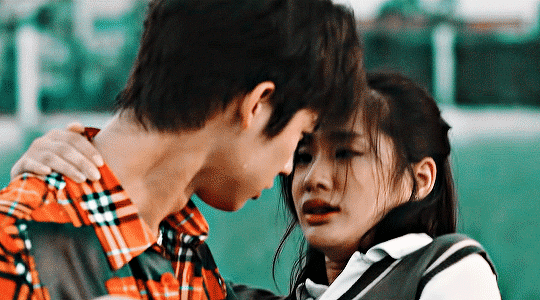
And now Ren shows up?

Oh buckle your seat chastity belts f4 addicts. We are in for a wild ride.
#f4 thai#f4 thailand#another day another f4 post#Ren#the home wrecker#thyme x gorya#f4 thailand: boys over flowers
102 notes
·
View notes
Text
Dear Evan Hansen Movie: Review (spoilers)
It says review but trust me, it’s more of a well worded rant than anything. Taken from my Letterboxd
Where do I even begin.
Okay, I enjoy the original musical. I have listened to the soundtrack more times than I can count and I've watched a bootleg of the original Broadway run, as well as many, many animatics. I was one of the people who saw the trailer and went oh crap - Kaitlyn Dever from 'Booksmart'? Amy Adams? From the people who brought you 'Perks of Being a Wallflower' and 'The Greatest Showman'? This must be in good hands, Ben Platt looking way too old for the role aside.
Haha.
Something that makes the musical actually work is the fact that it acknowledges the morally squicky situation and constantly calls Evan out on his bs. They allow you to sympathise with him while making it clear that hey, Evan is in the wrong here.
THE FILM CLEARLY DOESN'T GET THAT.
Instead, Evan is portrayed as the victim and they spend little to no time dealing with the moral and ethical complexities that makes the source interesting in the first place, even when that would be totally something that could be done with more emphasis on film than on the stage. They cut out 'Does Anybody Have a Map' - a song that sets up (arguably) the emotional core of the musical which is the mothers and their relationship with their sons and family. They cut out 'Good For You' which is (and I don't know how to emphasize this enough) SUCH A CORNERSTONE IN THE PLAY. It's the song where Evan has to face the consequences of his actions head on. But noooooooo. All we get is zero fricking resolution with the side characters that the film wrote pointless songs for to accommodate and Evan and his mum NOT talking things out realistically and lashing out like humans. I cried while watching that 240p bootleg of 'So Big So Small'. I felt nothing here. Instead, all the emotion the stage offered is put up in a blender of terrible sound mixing and hilariously bad VEVO music transitions.
Speaking of that, my gosh was the editing awful in this movie. The stupid, stupid quick-cuts during 'Waving Through A Window', the asinine repeated shot of Evan falling down the tree, THE ENTIRE 'Sincerely Me' I MEAN WHAT WAS THAT?? The whole film visuals felt like the Nexus ad in WandaVision. Y'know. The dreary antidepressant advertisment. Except one was ironic and the other was completely genuine.
The thing with adapting Dear Evan Hansen into a movie in the first place is that it's a low-key kind of musical. Most scenes are confined to 4 walls and include very few people just conversing with each other. It works fine on stage but when you're shooting 50% of your film in the same location and all the shots are either framed similarly or are straight up comical, it's going to be a problem. It was visually, either uninteresting or plain bad.
I didn't think the performances were terrible, aside from Ben Platt (oh we will get there). I liked Kaitlyn as Zoe (I will admit, I am biased), the others were... alright. They were passable. I blame it on the direction and script because they're clearly good performers.
And now we get to Evan Hansen himself. The 'too old' thing has been talked about to death but it genuinely takes you out of the film as you can't suspend your disbelief that he's playing a teenager, especially when his peers actually do look like teens. Ben is also overacting so much. When in theatre, the exaggerated slouches and ticks work because he's on the stage. Most people are far away. But on film when everything is close up, his stuttering and shaking come off as so forced. I genuinely don't understand. I've heard great things about him in The Politician and he's fine in the Pitch Perfects so what went wrong?
The only thing I sort of maybe liked was them getting closure with the video of Connor playing the guitar. But then, they went and got Jared to look sad for Connor when he literally has been doing everything to propel his social status and has no emotional stake with Connor, only with Evan for using him. WHICH WOULD HAVE BEEN CLEAR IF THEY INCLUDED 'Good For You'.
I have calmed down since writing this and all I feel now is numb. I listened to songs from the original Broadway Soundtrack after the movie as it auto played on youtube and felt. Now I’m just upset that people would probably never give the stage version a shot anymore. Thanks movie. *sigh*
38 notes
·
View notes
Photo
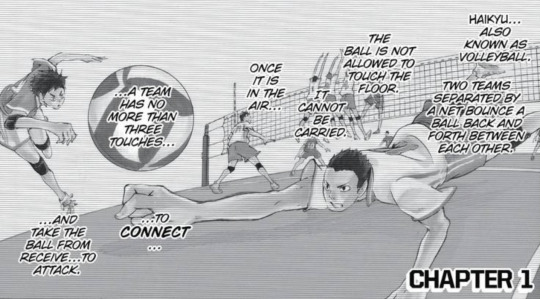
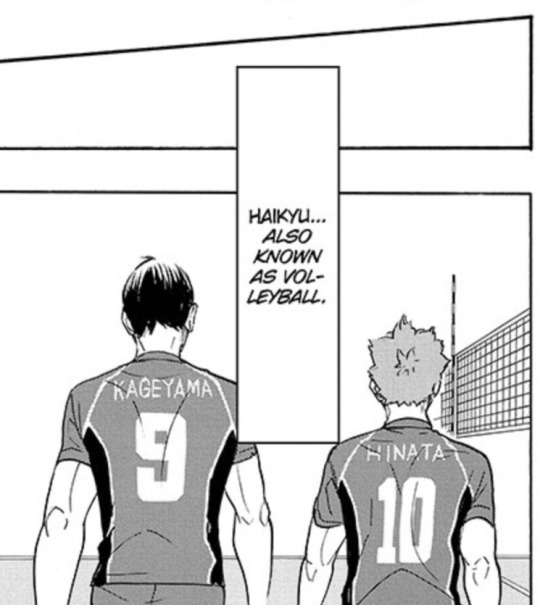



Chapter 1 | Chapter 402
I just opened up the first chapter to do a reread of everything from the beginning and I can’t believe I forgot that this quote is literally the first panel of the entire series. And the way the quote is then spread across those four pages in Chapter 402 makes me crazy, so excuse me while I ramble on about it under the cut
So I think this kind of goes without saying - but the fact alone that the series is bookended by this same quote right at the beginning, and throughout the final chapter just solidifies that it’s meant to be the core theme of the series. But it’s the way that the quote is presented the second time that really makes an impact to me.
At face value, as the opening line of the series, it’s just introducing us as the audience to the basic rules and concepts of volleyball. The teams are separated, there’s a ball, and neither team can let it touch the ground. It takes up a single panel and features nameless players diving, giving their all to try and keep the ball in play. It’s almost purely expository, there’s no emotion involved in the way it’s presented. (Except, arguably, the decision to bold the word “connect,” but I’m gonna come back to that later).
Then, as we read the series, we just come to learn the practical truth of these rules as they were presented to us. We meet other teams, play against them, and the whole time the idea of “connecting” the ball to your teammates, is slowly also framed as “connecting” the ball to the other side as well. If you botch a receive and it goes back over the net, it’s a chance ball for the other team to attack instead. The series is constantly bombarding us with imagery of the importance of every single action being connected to the next, first just physically in terms of passing the ball - but also themes of communication, friendships, and rivalries are brought into it too - emotionally connecting is just as crucial to winning as physically connecting is (BOTH of these are why they lose to Seijoh at Inter High). And the series shows us this both directly (Nekoma’s team banner being “connect” and their team emphasizes defense to make them strong), and more indirectly (Kageyama is well-renowned as a great player, but he doesn’t become phenomenal until he connects to his teammates emotionally and learns to communicate better). (I could tangent on about this for a while, but I’ve already sort of made a post about it here, so I won’t go on too long on this point).
So, when we get to Chapter 402, we’re already emotionally involved, we know the importance of the rules because we’ve been following them, living within in them for the last four hundred chapters. The quote starts small - that panel of Hinata and Kagayema’s backs that just say “Haikyu... also known as volleyball,” is the very bottom corner of a much larger spread, it functions as a sort of introduction or a lead in to the next three pages.
Then, the next two page spread and we’re finally seeing the opening play between Argentina and Japan at the Olympics. The whole right side of the page is dedicated to Oikawa’s serve and the “two teams separated by a net...” is lingering in the readers mind, with Oikawa of course representing the “other” team. Most of this whole spread serves to show us those original rules being put into action, but now instead of nameless players we aren’t emotionally invested in, they’re players that we know and understand - we feel the gravity and the scale of the game they’re playing, but at the same time it almost feels nostalgic.
And something else that I think is really interesting, is that even though the quote on this spread starts with “two teams being separated by a net...” the net itself is nowhere to be seen on the page (other than the small panel at the right, where the emphasis is on the crowd and you can’t tell the teams apart anyway). From a practical standpoint, we know the net is there, but since we never see it visually, we’re already feeling how the theme of “connection” goes beyond just the players on “our” side of the net.
Then, the bottom left panel has Hinata and Kageyama’s backs to us again as the rush past each other in a way that’s very familiar to us now - the way they’re drawn to look like they’re going fast, and they aren’t looking at each other but are clearly on the same wavelength because of the framing - we know they’re about to do the freak quick. "Once it is in the air, a team has no more than three touches...” the words overlay it, but instead of going right into the next action, we flip the page and there’s only two words: “...to connect...” and the ENTIRE spread is just all of the characters who have made an impact on Hinata and Kageyama. The action just cuts out for a second and we’re left with this incredible visual of everyone they’ve connected with, and shown in instances of importance too - and the quote never stopped being about volleyball. The reader just pauses for a moment and takes in that it wasn’t just hard work that got them there - yes they learned to receive, set and spike, but they learned to connect to each other too. And I just love that the word “connect” has been bolded in both versions of the quote - its importance has been there all along, we just weren’t really aware of it yet.
The last page of the quote then shifts back to the game, and we get to see the results of Hinata and Kageyama’s connection specifically. The panelling here is some of my favorite in the whole series, the way the freak quick is portrayed is just phenomenal. Kageyama and Hinata separated by the break in the panel so we can see both of the faces, but the ball is the same. It makes us feel like they aren’t really separated at all, and using the ball as a visual representation of their connection I think is so simple and so powerful, AND it doubles as just a practical effect to show us how fast the ball had to move to get there.
The quote ends with the bit about attacking, and of course, they scored, but at this point it’s become clear that it was never really about that. It’s about the connections they made that allowed them the opportunity to score in the first place. Through each other, and everyone else they’ve met along the way, they got to keep playing.
This is also the first time we’ve seen the net since the match started, and when we do see it, it’s from the angle of Hinata’s eye as he looks over the top of it. Which, imo is another direct reference to the next quote from the very first chapter: “The view from the top. It’s something I could never ever see on my own. But maybe... just maybe... if I wasn’t alone... I might be able to see it.” The proof is all right there. He isn’t alone anymore, he can see the view from the top and he’s seeing it from the highest level in the world.
#legit i sat down to start reading and just immediately got emotional and wrote another 1k analysis post lmaoooo#HOW DID I NOT REMEMBER THIS IS THE OPENING QUOTE TF??#hq!!#hq meta#connect#hq manga spoilers#and ty to anyone who actually read all of that#x
128 notes
·
View notes
Text
Netflix Witcher s2 thoughts
obvious show spoilers but warning for some book spoilers too
It's weird as a Witcher fan who played the first game, then read all the books waiting for game 2 to release, how there’s now a huge fandom. The fandom really grew after game 3 but this is a whole new level
Was thinking watching this, somewhat surprising to me that I’m not interested in most show fanworks despite there now being so many works in the fandom. Often it’s so different from the characterizations I’m used to, and sometimes those works are “popular fandom characterization you disagree with”
Overall I didn’t like s2; just like WoT, I think a person’s relationship with the original books will heavily effect their opinion vs a show only watcher.
The bruxae was done well, i can’t wait to see how they do Regis, like beautiful mix of makeup, camera work, and CGI
I really like how they adapted the short story to ep 1 and kept the themes and the emotional gut punches, while changing it to work for the show. I think one of the best changes was Geralt walking away after learning of the rape, and the obvious condemnation by the show for his actions at the temple and allowing a Bruxae to prey on the villages
Vesemir looks like a Vesemir, good casting there. Also wow a lot more witchers here than in the book. I think the adaptation of having a bunch more witchers than the book’s 3 wolf school ones plus Coen, gives it such a different tone especially with the Eskel and the prostitutes plotline in the supposed to be hidden Kaer Morhen.
THEY KILLED ESKEL?!?!? (didn’t like it) This was the point where I started looking to see what other book readers were thinking
Best opinion i’ve seeing is: wish the show was in a place where they could use dialogue to build tension and not have to have Geralt fight a tree monster since its been 30 minutes since the last fight
The costuming on the show is always wild, like Yennifer having the most modern dress compared to the long sleeve ones in the pool reunion scene. Words I’m looking for are THEMATICALLY INCONSISTENT. Seriously the way that Yennifer gets more modern looking gowns, then look at someone like Dijkstra, the visual style is just so confusing
I think its funny how they completely changed the Nilfgard armor from s1 ballsack to something that looks good, and just don’t even mention it in the show
Like how they're handling Triss’s scar and body consciousness, I really liked her this whole season
I don’t know why they added in this yennifer losing her magic plotline other than the books didn’t have her doing much during this time, since she was blinded. I didn’t think it was a good plotline, wish they hadn’t done it, and it was thinking this in ep4
Damn they finally gave Dandelion a hat and tried to age him up, with all the other changes I get why they changed his plot and reunion with Yennifer, glad she still got to have rescue him at some point
Damn Dijkstra’s ripped and I think its hilarious that its portrayed he’s ranting at a random owl and not Philippa Eilhart (i hope for show only fans it is a fun reveal at the end)
Glad they kept Triss calling out the Witcher’s speech about Ciri’s health from BoE
Geralt and Istredd interacting in completely different circumstances, but enjoyable none the less
There was a post about how s1 show is going to make Cahir’s later redemption be harder and s2 is doubling down on that
HOLY SHIT, the Fringilla freezing people then murdering them was absolutely brutal. It started with the eye trauma like W3 Hearts of Stone then just got so much more intense. JFC
Yennifer going to sacrifice Ciri, don’t like this plot change
just realized Shani never showed up :(
This whole show only Monolith plot with the demon in the woods, it really felt like filler since they spent so much time on that instead of book content. I think the Deathless Mother plot was way worse than the book plot, a magical big bad was written rather than have a lot of character interaction and politicking
Had to rewind it a second time: all these show only Witchers which changes the dynamic of the found family of Kaer Morhen, and they invented a Deathless Mother plot just to have Ciri kill them off in a “oh no she’s dangerous and look how bad the big bad is” moment. Seriously this plotline makes me not enjoy s2
Like when Ciri started summoning creatures I just emotionally checked out from the show, since it felt like the showrunners decided there NEEDED to be a big climatic battle at the end of the season and worked back from there (I know im being salty here)
The show had a LOT less of Blood of Elves in it than I was expecting, and lot of the elf and mage political plot was changed so much its hard for me to guess how the adaptation will go in s3. Its gonna be so long till we get to the hansa :(
Its really late arrival spoilers that Emhyr is Ciri’s father, but if the show is being so open about it then hopefully they’ll not do the incest plot of the books that W3 game quietly dropped (for the better imo). Reading the books I was like; guess I’ll hate Emhyr forever
#mac watches tv#the witcher spoilers#there are book spoilers too#the witcher netflix#the witcher#im honestly curious to come back in 3-5 years#when they finish the show and see if my opinion changes
8 notes
·
View notes